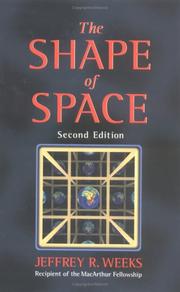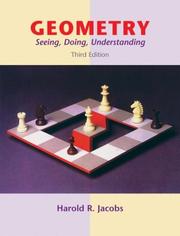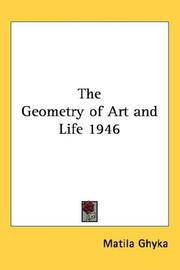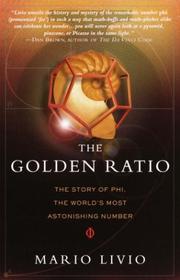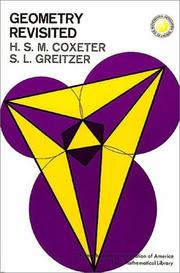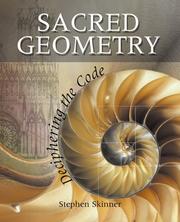If you’re a math enthusiast or simply intrigued by the world of shapes and dimensions, you’ll love diving into the fascinating world of geometry through these 20 best books about geometry. Whether you’re a student looking for a comprehensive book on geometry or a curious reader seeking to explore the beauty of geometric principles, this list has something for everyone. From Euclidean geometry to modern geometric theories, these books cover a wide range of topics, making them essential additions to any library. Get ready to expand your knowledge and appreciation of geometry with these captivating reads!
Contents
- 1 20 Best Geometry Books
- 2 Euclid’s Window: The Story of Geometry from Parallel Lines to Hyperspace
- 3 The Shape of Space: How to Visualize Surfaces and Three-Dimensional Manifolds
- 4 Geometry: A Comprehensive Course
- 5 The Fractal Geometry of Nature
- 6 Geometry: Seeing, Doing, Understanding
- 7 The Elements of Euclid
- 8 The Visual Display of Quantitative Information
- 9 Geometry: A Self-Teaching Guide
- 10 The Geometry of Art and Life
- 11 The Golden Ratio: The Story of Phi, the World’s Most Astonishing Number
- 12 The Annotated Flatland: A Romance of Many Dimensions
- 13 Euclid’s Elements
- 14 Geometry Revisited
- 15 Sacred Geometry: Deciphering the Code
- 16 Geometry: Seeing, Doing, Understanding
- 17 Geometry: Our Cultural Heritage
- 18 Geometry and the Imagination
- 19 Elementary Geometry for College Students
- 20 The Symmetries of Things
- 21 Geometry: Concepts and Applications
- 22 Final Thoughts on Best Geometry Books
- 23
20 Best Geometry Books
Euclid’s Window: The Story of Geometry from Parallel Lines to Hyperspace
by Leonard Mlodinow
Euclid’s Window: The Story of Geometry from Parallel Lines to Hyperspace, written by Leonard Mlodinow, is a captivating book on geometry that takes readers on a fascinating journey through the history and evolution of this fundamental branch of mathematics. Mlodinow skillfully weaves together historical anecdotes, scientific discoveries, and personal insights to bring the world of geometry to life.
From the ancient Greeks to modern-day mathematicians, the book about geometry delves into the minds of those who have grappled with the mysteries of shapes, angles, and dimensions. It explores the development of key geometric concepts, such as parallel lines, the Pythagorean theorem, and the emergence of non-Euclidean geometries.
What sets Euclid’s Window apart from other geometry books is its ability to make complex mathematical ideas accessible and engaging for readers of all backgrounds. Mlodinow’s clear and engaging writing style, combined with his passion for the subject, makes this geometry book a must-read for anyone curious about the profound impact of geometry on our understanding of the world.
The Shape of Space: How to Visualize Surfaces and Three-Dimensional Manifolds
by Jeffrey R. Weeks
The Shape of Space: How to Visualize Surfaces and Three-Dimensional Manifolds by Jeffrey R. Weeks is a captivating geometry book that takes readers on a fascinating journey through the complex world of shapes and spaces. With clear explanations and engaging illustrations, Weeks explores the concept of surfaces and three-dimensional manifolds, making abstract mathematical ideas accessible to a wide audience.
Readers will be intrigued by the author’s ability to translate complex geometry concepts into relatable and understandable terms, allowing them to visualize and comprehend the intricacies of different shapes and spaces. From the familiar world of spheres and cubes to the mind-bending realm of non-Euclidean geometries, this book offers a comprehensive exploration of the diverse landscape of spatial mathematics.
Whether you’re a seasoned mathematician or simply curious about the mysteries of space, The Shape of Space is a must-read that will expand your understanding of the geometry that surrounds us.
Geometry: A Comprehensive Course
by Dan Pedoe
Geometry: A Comprehensive Course by Dan Pedoe is a highly acclaimed book on the subject of geometry. This comprehensive text covers all the fundamental concepts of geometry in a clear and accessible manner, making it an invaluable resource for students and educators alike. Pedoe’s approach to the subject is both rigorous and engaging, providing readers with a deep understanding of the principles and applications of geometry.
Whether you’re a beginner looking to build a strong foundation in geometry or an advanced student seeking to deepen your knowledge, this book about geometry has something to offer. With its wealth of exercises and examples, readers can test their understanding and further develop their problem-solving skills. The book also delves into the historical developments of geometry, giving readers a rich contextual understanding of the subject.
Overall, Geometry: A Comprehensive Course is a must-read for anyone interested in the beauty and intricacies of geometry, and it serves as an indispensable resource for those seeking a thorough exploration of the subject.
The Fractal Geometry of Nature
by Benoit B. Mandelbrot
The Fractal Geometry of Nature by Benoit B. Mandelbrot is a groundbreaking book on fractal geometry, a branch of mathematics that explores complex, irregular shapes found in nature. Mandelbrot’s work revolutionized our understanding of the natural world, showing that many seemingly chaotic and unpredictable phenomena can be described and understood using fractal geometry.
In this book about geometry, Mandelbrot introduces the concept of fractals and demonstrates how they can be used to model and analyze a wide range of natural phenomena, from coastlines and clouds to the stock market and human physiology. He presents his ideas in a clear and accessible manner, making this geometry book suitable for both mathematicians and non-mathematicians alike.
With its stunning illustrations and thought-provoking insights, The Fractal Geometry of Nature is a must-read for anyone interested in the beauty and complexity of the natural world, and for those fascinated by the connections between mathematics and the world around us.
Geometry: Seeing, Doing, Understanding
by Harold R. Jacobs
Harold R. Jacobs’ “Geometry: Seeing, Doing, Understanding” is a comprehensive and engaging book on geometry that aims to help students truly comprehend the subject. This geometry book goes beyond the traditional approach of memorizing theorems and formulas, instead focusing on the visual and practical aspects of geometry. Jacobs emphasizes the importance of understanding the concepts by providing clear explanations and real-world examples, allowing readers to see and do geometry rather than just passively memorizing it.
Readers will appreciate the interactive nature of the book, as it encourages them to actively engage with the material through exercises and activities. Jacobs’ writing style is accessible and engaging, making the learning process enjoyable and effective. Whether you’re a student struggling with geometry or a teacher looking for a fresh approach to teaching the subject, “Geometry: Seeing, Doing, Understanding” is a must-read for anyone interested in mastering the art of geometric thinking.
The Elements of Euclid
by Oliver Byrne
The Elements of Euclid by Oliver Byrne is a visually stunning book on geometry that presents the principles of Euclidean geometry in a unique and engaging way. Originally published in 1847, this book about geometry stands out for its use of colorful diagrams and illustrations to explain the mathematical concepts. Byrne’s use of vibrant red, yellow, and blue shapes and lines not only makes the geometric theorems and proofs easier to understand but also turns the book into a work of art.
Readers of this geometry book will find themselves immersed in a world where mathematical principles come to life through the use of vivid imagery and clear explanations. Whether you are a student looking to grasp the fundamentals of geometry or a math enthusiast seeking a visually captivating approach to the subject, The Elements of Euclid by Oliver Byrne is sure to leave a lasting impression.
The Visual Display of Quantitative Information
by Edward R. Tufte
The Visual Display of Quantitative Information by Edward R. Tufte is a groundbreaking book on the representation of data. Tufte’s work is a masterful exploration of the art and science of presenting numerical information in graphical form. This influential book is a must-read for anyone interested in presenting data in a clear, effective, and visually compelling way. Tufte’s approach is both practical and inspiring, offering a wealth of examples and techniques for creating impactful visual displays of information. Whether you’re a data analyst, designer, or simply someone who wants to better understand the power of visual communication, this book about geometry will transform the way you think about presenting data. Tufte’s insights and principles are as relevant today as when the book was first published, making this a timeless and essential resource for anyone working with quantitative information.
Geometry: A Self-Teaching Guide
by Steve Slavin
Are you looking for a comprehensive and easy-to-understand book on geometry? Look no further than “Geometry: A Self-Teaching Guide” by Steve Slavin. This book is designed to help you master the fundamental concepts of geometry at your own pace.
Whether you’re a student struggling with geometry or an adult looking to refresh your math skills, this book about geometry provides clear explanations, step-by-step examples, and plenty of practice problems to reinforce your understanding.
With “Geometry: A Self-Teaching Guide,” you’ll learn about angles, lines, shapes, and measurements in a way that’s engaging and easy to follow. The author, Steve Slavin, breaks down complex geometric concepts into manageable chunks, making this geometry book perfect for self-study or as a supplement to a geometry course.
So, if you’re ready to conquer your fear of geometry and build a strong foundation in this essential math subject, “Geometry: A Self-Teaching Guide” is the perfect resource to help you succeed.
The Geometry of Art and Life
by Matila Ghyka
The Geometry of Art and Life by Matila Ghyka is a fascinating exploration of the interconnectedness of art, mathematics, and nature. This captivating book delves into the profound relationship between geometry and the world around us, revealing the hidden patterns and symmetries that shape our visual experiences.
Ghyka’s insightful analysis encompasses a wide range of topics, from the geometry of ancient architecture to the mathematical principles behind artistic compositions. Through engaging prose and illuminating illustrations, the author invites readers to discover the underlying geometric structures that underpin both artistic masterpieces and natural phenomena.
Whether you’re an art enthusiast, a mathematics aficionado, or simply curious about the intrinsic connections between the two, this book about geometry offers a wealth of thought-provoking insights and revelations. The Geometry of Art and Life is a must-read for anyone seeking a deeper understanding of the profound relationship between geometry and the world as we perceive it.
The Golden Ratio: The Story of Phi, the World’s Most Astonishing Number
by Mario Livio
The Golden Ratio: The Story of Phi, the World’s Most Astonishing Number by Mario Livio is a captivating exploration of the fascinating connection between mathematics, art, and nature. This insightful book delves into the history and significance of the golden ratio, also known as phi, a mathematical constant that has intrigued scholars, artists, and scientists for centuries.
Through a blend of historical anecdotes, scientific discoveries, and artistic examples, Livio unravels the mystique surrounding this enigmatic number, revealing its ubiquitous presence in architecture, art, and the natural world. Readers will be enthralled by the author’s lucid explanations and engaging narrative, which make complex mathematical concepts accessible to all.
Whether you’re a mathematics enthusiast or simply curious about the hidden patterns and symmetries in the world around us, this book on geometry is sure to captivate and inspire. Join Mario Livio on a journey through the depths of the golden ratio, and discover the profound impact of this extraordinary number on the world of art, science, and geometry.
The Annotated Flatland: A Romance of Many Dimensions
by Edwin A. Abbott
The Annotated Flatland: A Romance of Many Dimensions is a fascinating book about geometry that takes readers on a mind-bending journey through a two-dimensional world. Written by Edwin A. Abbott, this classic work of science fiction explores the concept of different dimensions and the limitations of perception. Through the story of a square who lives in the two-dimensional world of Flatland, Abbott delves into the complexities of spatial dimensions and the ways in which they shape our understanding of reality.
What makes this geometry book truly exceptional is the addition of annotations by mathematician Ian Stewart, which provide valuable insights and explanations that enhance the reader’s understanding of the mathematical concepts explored in the novel. The Annotated Flatland is a thought-provoking and visually stimulating journey that challenges readers to think beyond the constraints of traditional Euclidean geometry and consider the possibilities of higher dimensions.
Euclid’s Elements
by Euclid
Euclid’s Elements is a timeless masterpiece that has stood the test of time as a definitive book on geometry. This ancient Greek work, composed by Euclid around 300 BC, is a comprehensive compilation of mathematical knowledge, covering a wide range of topics such as plane geometry, number theory, and solid geometry. The book is structured in 13 volumes, or ‘books’, each focusing on different aspects of geometry.
Euclid’s Elements is a seminal work that has greatly influenced the development of mathematics and science throughout history. It presents a systematic approach to understanding the fundamental principles of geometry, offering clear and concise explanations, along with a series of propositions, theorems, and proofs. This timeless book about geometry continues to be a fundamental resource for students, scholars, and anyone with an interest in the beauty and logic of mathematics. Euclid’s Elements remains an indispensable classic that continues to inspire and educate readers with its enduring insights into the world of shapes, angles, and spatial relationships.
Geometry Revisited
by H.S.M. Coxeter
Geometry Revisited by H.S.M. Coxeter is a classic book on geometry that offers a fresh and insightful approach to the subject. This renowned book about geometry presents the fundamental concepts and theorems of geometry in a clear and engaging manner, making it an invaluable resource for students, teachers, and enthusiasts alike. The author, Harold Scott MacDonald Coxeter, is a distinguished mathematician known for his contributions to geometry, and his expertise shines through in this comprehensive and thought-provoking geometry book.
Readers will find themselves captivated by the elegant proofs, captivating illustrations, and intriguing problems presented in Geometry Revisited. By delving into the pages of this geometry book, one can gain a deeper understanding of the beauty and intricacies of geometric principles, from Euclidean geometry to projective geometry. Coxeter’s passion for the subject is palpable, making this book on geometry a must-read for anyone seeking to expand their knowledge and appreciation of the mathematical world.
Sacred Geometry: Deciphering the Code
by Stephen Skinner
Sacred Geometry: Deciphering the Code by Stephen Skinner is a fascinating exploration of the ancient art of geometric patterns and their spiritual significance. This captivating book on geometry delves into the mathematical principles and symbolism behind sacred geometry, revealing its presence in art, architecture, and religious practices throughout history.
Skinner’s in-depth analysis and beautiful illustrations bring to life the intricate patterns and shapes found in nature, as well as in ancient and modern constructions. Through his meticulous research, the author unveils the hidden codes and meanings encoded within geometric designs, offering a profound understanding of their spiritual and cultural importance.
Whether you’re a novice or a seasoned enthusiast, this book about geometry is a must-read for anyone intrigued by the mysterious and awe-inspiring world of sacred geometry. Skinner’s expertise and passion for the subject shine through in this comprehensive and accessible exploration of the timeless principles that govern the universe.
Geometry: Seeing, Doing, Understanding
by Harold R. Jacobs
Geometry: Seeing, Doing, Understanding is a comprehensive and engaging book on geometry that aims to provide a deeper understanding of the subject. Written by Harold R. Jacobs, this geometry book takes a unique approach to teaching geometry by emphasizing visual and hands-on learning. The book encourages students to see, explore, and understand geometric concepts through practical and real-world examples.
Jacobs’ book about geometry covers a wide range of topics, including angles, triangles, quadrilaterals, circles, and three-dimensional geometry. The book also incorporates problem-solving exercises and activities to help students develop their analytical and critical thinking skills.
With its clear explanations, colorful illustrations, and interactive approach, Geometry: Seeing, Doing, Understanding is a valuable resource for students and educators alike. Whether you’re new to geometry or looking to deepen your understanding of geometric principles, this geometry book offers a refreshing and effective way to learn and appreciate the beauty of geometry.
Geometry: Our Cultural Heritage
by Audun Holme
Geometry: Our Cultural Heritage by Audun Holme is a captivating exploration of the rich history and significance of the discipline of geometric study. This illuminating book delves into the cultural and historical impact of geometry, covering its influence on art, architecture, and scientific discoveries throughout the ages. Holme provides a comprehensive overview of the development of geometry, from ancient civilizations to the modern era, highlighting its vital role in shaping our world.
Readers will be enthralled by the way this book about geometry seamlessly weaves together mathematical concepts with cultural insights, offering a fresh perspective on the subject. Holme’s engaging writing style makes complex ideas accessible, making it an ideal read for both scholars and enthusiasts alike. Whether you’re a mathematics aficionado or simply curious about the profound impact of geometric principles on our society, Geometry: Our Cultural Heritage is a must-read that will deepen your appreciation for the enduring legacy of this fundamental field of study.
Geometry and the Imagination
by David Hilbert
Geometry and the Imagination by David Hilbert is a captivating book about geometry that takes readers on a journey through the fascinating world of shapes, space, and mathematical reasoning. Hilbert, a renowned mathematician, invites readers to explore the power of imagination in understanding and visualizing geometric concepts.
This geometry book delves into the beauty and elegance of geometric principles, providing a deep appreciation for the role of imagination in uncovering the truths of spatial relationships. With clarity and precision, Hilbert presents complex ideas in a way that is accessible to both beginners and experienced mathematicians, making this book on geometry a valuable resource for anyone interested in the subject.
Through thought-provoking examples and thought experiments, Hilbert illustrates the profound influence of imagination on the development of geometric theories and its impact on our understanding of the physical world. Whether you’re a student, educator, or simply a lover of mathematics, Geometry and the Imagination offers a captivating exploration of the profound connection between geometry and the human imagination.
Elementary Geometry for College Students
by Daniel C. Alexander
Elementary Geometry for College Students by Daniel C. Alexander is a comprehensive and accessible textbook that introduces students to the fundamental concepts of geometry. This engaging book on geometry covers essential topics such as points, lines, angles, triangles, polygons, circles, and solid geometry. The author presents the material in a clear and concise manner, making it perfect for students who are new to the subject.
With its emphasis on practical applications and real-world examples, this geometry book is designed to help students develop a strong foundation in the subject. The book also includes numerous exercises and problems to reinforce the concepts learned, making it an invaluable resource for both classroom instruction and self-study.
Whether you’re a college student taking a geometry course or someone looking to refresh your knowledge of geometric principles, Elementary Geometry for College Students is a must-have book about geometry that will guide you through the fascinating world of shapes, space, and measurement.
The Symmetries of Things
by John H. Conway, Heidi Burgiel, and Chaim Goodman-Strauss
The Symmetries of Things is a captivating book about geometry that takes readers on a fascinating journey through the world of symmetrical shapes and patterns. Written by John H. Conway, Heidi Burgiel, and Chaim Goodman-Strauss, this book is a comprehensive exploration of the intricate and beautiful symmetries found in various geometric figures.
Readers will be captivated by the authors’ clear and engaging explanations of the symmetries found in everyday objects, as well as more complex mathematical structures. The book delves into the symmetries of polygons, polyhedra, and even higher-dimensional shapes, offering a rich and accessible exploration of the underlying principles of symmetry in geometry.
With its vivid illustrations and compelling narrative, The Symmetries of Things is a must-read for anyone interested in the beauty and complexity of the natural world. Whether you are a math enthusiast, an artist, or simply curious about the patterns that surround us, this geometry book will open your eyes to the mesmerizing symmetries that shape our world.
Geometry: Concepts and Applications
by Paul A. Foerster
Geometry: Concepts and Applications by Paul A. Foerster is a comprehensive and engaging book on geometry that provides a thorough exploration of geometric concepts and their real-world applications. This book about geometry covers a wide range of topics, from basic geometric principles to more advanced theorems and proofs, making it suitable for students at various levels of mathematical proficiency.
Readers will find the text to be clear and accessible, with plenty of examples and exercises to help reinforce their understanding of geometric concepts. Foerster’s writing style is both informative and engaging, making the study of geometry an enjoyable and rewarding experience. Whether you’re a student looking to strengthen your grasp of geometric principles or a teacher in search of a comprehensive geometry book for your classroom, Geometry: Concepts and Applications is an invaluable resource that will help you master the fundamental concepts of this fascinating branch of mathematics.
Final Thoughts on Best Geometry Books
Exploring the world of Geometry through literature can be a fascinating journey. The 20 best books about geometry provide a rich and diverse range of perspectives on this foundational branch of mathematics. Whether you are a student, educator, or simply curious about the subject, these books offer valuable insights and knowledge. From classic texts to modern interpretations, there is something for everyone to discover within the pages of these geometrically inclined books.
Which book about Geometry is best?
The best book on Geometry can vary with personal preference, but three widely recommended titles are:
- Euclid’s Window: The Story of Geometry from Parallel Lines to Hyperspace by Leonard Mlodinow,
- The Shape of Space: How to Visualize Surfaces and Three-Dimensional Manifolds by Jeffrey R. Weeks,
- Geometry: A Comprehensive Course by Dan Pedoe.
Each offers valuable insights and could be a great starting point.
What are the best books to learn about Geometry?
For those looking to learn about Geometry, there is a wealth of literature that can provide a comprehensive understanding of the subject. Some of the most highly recommended books include:
- Euclid’s Window: The Story of Geometry from Parallel Lines to Hyperspace by Leonard Mlodinow,
- The Shape of Space: How to Visualize Surfaces and Three-Dimensional Manifolds by Jeffrey R. Weeks,
- Geometry: A Comprehensive Course by Dan Pedoe,
- The Fractal Geometry of Nature by Benoit B. Mandelbrot,
- Geometry: Seeing, Doing, Understanding by Harold R. Jacobs,
- The Elements of Euclid by Oliver Byrne,
- The Visual Display of Quantitative Information by Edward R. Tufte,
- Geometry: A Self-Teaching Guide by Steve Slavin,
- The Geometry of Art and Life by Matila Ghyka,
- The Golden Ratio: The Story of Phi, the World’s Most Astonishing Number by Mario Livio
These books offer a range of perspectives on Geometry, covering various aspects and approaches to the subject.
What are the best books about Geometry?
The best books about Geometry are:
- Euclid’s Window: The Story of Geometry from Parallel Lines to Hyperspace by Leonard Mlodinow,
- The Shape of Space: How to Visualize Surfaces and Three-Dimensional Manifolds by Jeffrey R. Weeks,
- The Annotated Flatland: A Romance of Many Dimensions by Edwin A. Abbott,
- Euclid’s Elements by Euclid,
- Geometry: A Self-Teaching Guide by Steve Slavin,
- The Elements of Euclid by Oliver Byrne.
Each offers unique insights into the subject. While these books about Geometry are highly regarded, it’s important to note that any list of ‘best’ books is subjective and reflects a range of opinions.
What are the best Geometry books of all time?
Choosing the best Geometry books of all time can vary depending on who you ask, but five titles that are often celebrated include
- Euclid’s Window: The Story of Geometry from Parallel Lines to Hyperspace by Leonard Mlodinow,
- The Shape of Space: How to Visualize Surfaces and Three-Dimensional Manifolds by Jeffrey R. Weeks,
- Geometry: Seeing, Doing, Understanding by Harold R. Jacobs,
- Geometry: A Self-Teaching Guide by Steve Slavin,
- and The Annotated Flatland: A Romance of Many Dimensions by Edwin A. Abbott.
Each of these books has made a significant impact in the field of Geometry and continues to be influential today.


